Exclusive Interviews with the Designers Behind the CDW Landmark Installations: Jordan Cluroe & Russell Whitehead
Clerkenwell Design Week (CDW) stands as a premier highlight in the UK’s commercial design landscape, annually transforming London’s Clerkenwell into a vibrant hub of creativity and innovation. The festival, which attracts designers, architects, and enthusiasts worldwide, features an array of showroom events, exhibitions, and engaging activities.
Central to the festival’s allure are the commissioned installations, strategically placed throughout the event; these installations not only challenge and expand perceptions of design but also act as landmarks which tie the sprawling event together. Crafted to inspire and entertain, these installations transform the streets of Clerkenwell into a dynamic, immersive design journey.
As Clerkenwell Design Week unfolds, Design Insider is thrilled to lead the conversation with exclusive, in-depth interviews with four of the talented designers commissioned to create these landmark installations. Our series begins with a fascinating interview with Jordan Cluroe and Russell Whitehead, the visionary husbands and co-founders of 2LG Studio.
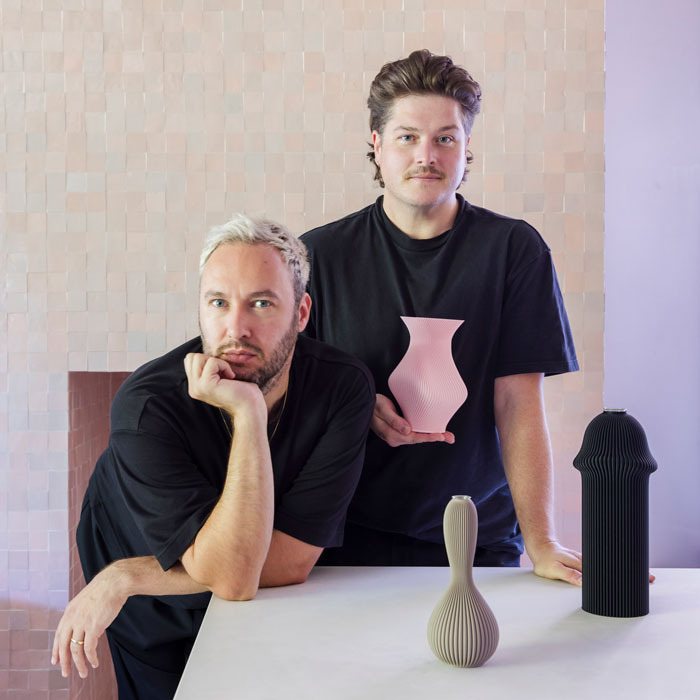
Jordan Cluroe and Russell Whitehead with the Edge collection of Vases by 2LG in collaboration with SHEYN photo Megan Taylor
Can you start by introducing yourselves and giving us an overview of what 2LG Studio stands for and how it has evolved over the years?
Our design practice began with residential interiors and has evolved over the years, branching into product design, creative direction, design columnists, commercial design and consultation. The bulk of our residential work has been in London as we are based in South East London, but we have undertaken remote projects in New York, Spain and Switzerland. Our first book, laying out 12 of our projects and our design ethos, was published by Thames and Hudson, entitled ‘Making Living Lovely’.
When we first launched our business we approached our work with a wide-eyed enthusiasm and awe for the wonderful global design scene and that awe is still with us today. Our work has evolved and we have become known for our passionate use of colour and alternative form, our inquisitive use of new materiality (specifically recycled, waste or sustainable materials) and our narrative driven design approach. We have reached a moment in our career where we try not to judge ourselves or each enquiry and are drawn to projects based on the creative opportunity and human connection they present.
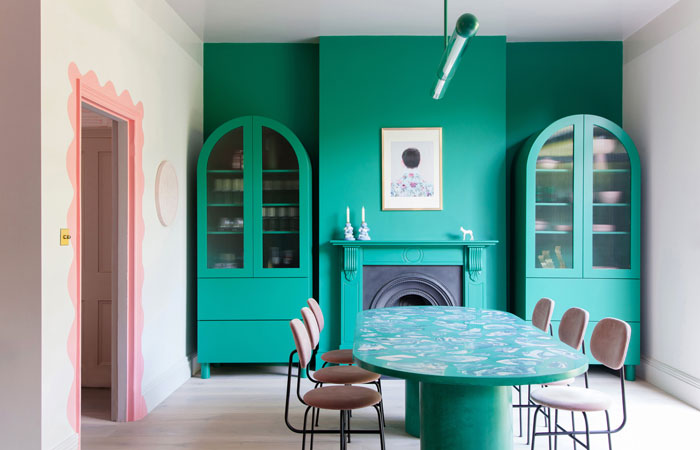
Green cabinets in 2LG studios home RISE cabinets for John Lewis of Hungerford photo Megan Taylor
Celebrating your 10th anniversary is a significant milestone. Could you share three highlights or pivotal moments from the past decade that have shaped 2LG Studio?
One of the first would be our collaboration with Ligne Roset in the early stages of our design careers. Thanks to Robert Hasty for this amazing opportunity we got to re-imagine the Piere Charpin slice chair in one of our own fabrics from a collaboration with CUSTHOM. We created several wallpaper and fabric designs for this collection and previewed them in London’s Ligne Roset store in 2015 and were then asked to re-create a version of the show for design week in NYC the year after. Such an exciting opportunity and a great learning experience which paved the way for our collaborative mindset and future work. We will forever be grateful for that.
Being commissioned by Thames and Hudson to write our first book, Making Living Lovely, has to be one of our greatest achievements. It was a long process, getting our first book commissioned and we put so much of ourselves into it. We are hugely proud of the work and grateful that we could use our voice in a positive way through this book. We still get messages from people who have used the book in their learning or to help them navigate a design project of their own and that’s rewarding.
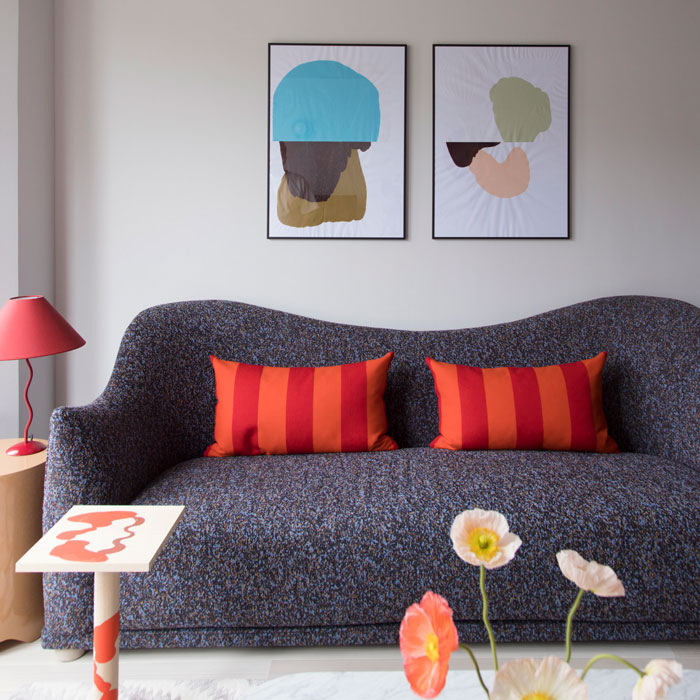
TILDA sofa by 2LG studio for Love your home photo Megan Taylor
Perry Rise Design house. This house, our primary home, has been our muse and showcase for our creativity. Having designed many homes for our clients over the years, this interior design project was a crystallization of our ‘joyful minimalism’ style that we have become known for. It was a place for us to be playful and inquisitive and that journey has informed much of our subsequent design output. It has also been the inspiration and birthplace of most of our product collaborations.
Your work at the London Design Fair was particularly standout. Could you walk us through that project and explain why it held such significance for you?
That project was particularly close to our hearts. We invited 12 emerging designers to join us and collaborated with 5 design brands with whom we had longstanding relationships, to create a show that was a celebration of identity and inclusivity. It was born from the fact we had been through a difficult few years which began with a series of death threats hand written and delivered to our home fortnightly for almost 2 years. They were homophobic letter and particularly scary. It really knocked our sense of self and safety, but also, made it hard to keep positive and feel joy, things that we were known for.
I (Russell) in particular struggled with that and spent 2 years on a healing journey with a therapist that has been restorative and transformative. It was the catalyst for a period of deep questioning in our work. Previously, we had been resiliently positive, taking the usual hits that you take in a creative business but this forced us to take time to accept the hurt we had felt and understand what it meant for us to be othered and made to feel outsiders.
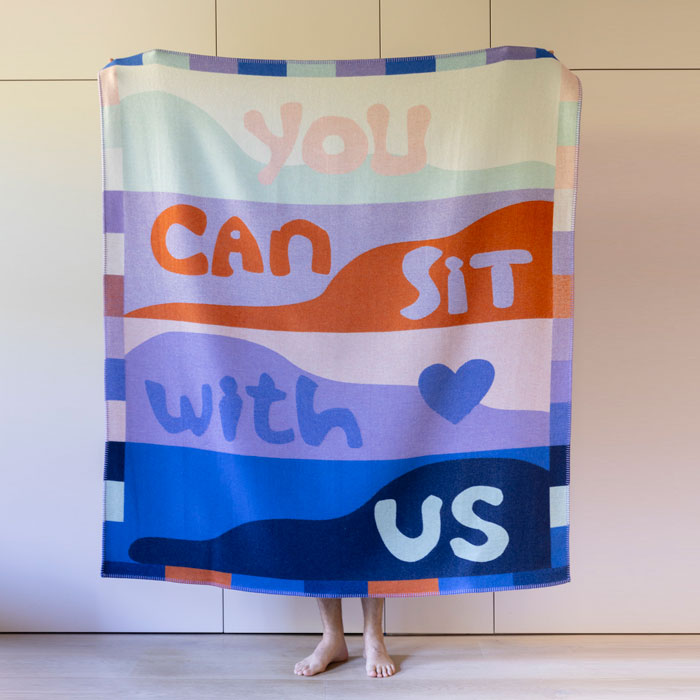
You can sit with us blanket by 2LG studio X Granite and Smoke photo Megan Taylor
So our concept for You Can Sit With Us came from this questioning. It was the first time in our career that we had dared to be vulnerable in this way and share our emotion. It was hugely cathartic as a result and we found that visitors connected to it with strong emotion. We are often made to feel that emotion is not needed in the design world but this was us reaching out our hands and saying join us, we want you here, we want to hear about your unique perspectives and your differences are embraced here in this space.
It was also the first time we had allowed ourselves to bring in threads from our past careers in the theatre as we created as piece of music for the space entitled “Afraid to Make a Sound’, written and performed by me (Russell) in collaboration with composer Quentin LaChapelle. That piece has unlocked a new layer of our work that we will be exploring more for Clerkenwell Design Week.
How does Clerkenwell Design Week (CDW) fit into your annual design calendar, and what importance does it hold for you and your studio?
We love Clerkenwell, it comes at a time of year when the sun is beginning to shine and it is a lovely place to catch up with many of our friends (designers, specifiers and journalists) who we have met over the years. It’s so important to keep up those human connections with in person events and catch-ups. We’ve attended the show for many years, and this is the first time we will be showing there. There is a healthy dose of nerves and a lot of excitement.
We’re excited to hear about your CDW installation. Could you introduce us to the concept behind “Stay Playful (When No One Feels Like Playing)” and what inspired its creation?
We cannot wait to share our work for this one because it represents a new direction for us, but also a reclaiming of the joy we began our careers with. When we were asked to design something, we knew it needed to be about our identity, as that had proven to be a hugely rich area for us with YCSWU last year.
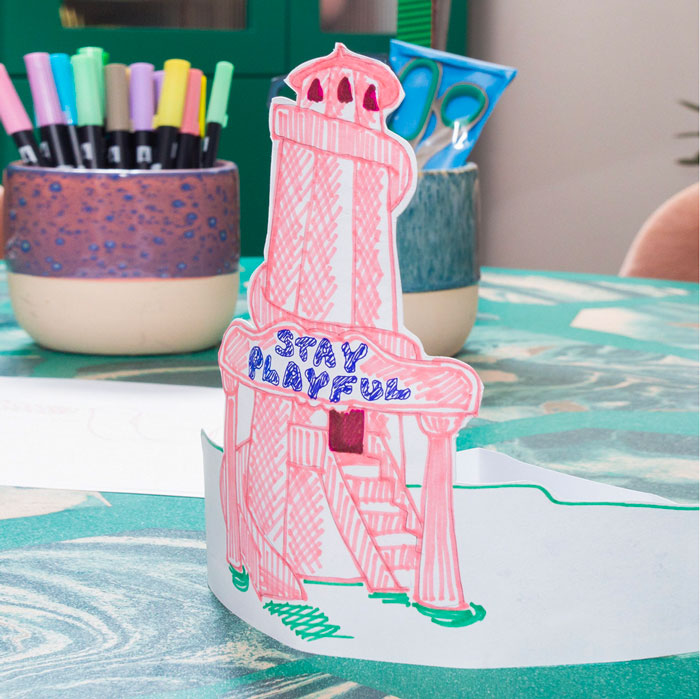
Stay Playful (When No One Feels Like Playing). Picture by Rachel Adams
We also had many conversations about what our role as designers is in the world right now. The world feels so heavy with sadness and conflict so we questioned what joy meant and if play was valid at this time. We came to the conclusion that without hope, there is nothing, so we feel it is vital that moments of playfulness can be celebrated where we make them. The installation is based on a vintage Helter Skelter that visitors will be able to experience. It will be a visual beacon of joy at the heart of CDW in bold colour. Then when you enter the structure you will find a more personal journey into our childhoods, the roots of our playfulness.
My nan died very recently and I have written a spoken word piece for the installation with soundscape composed in collaboration with Quentin LaChapelle again. It is entitled ‘The Fall’, about the complexities of life, with the swift decline a fall can bring, but also a celebration of the fun the slide itself gives you. Joyful on the outside, vulnerable and nostalgic on the inside.
This installation seems deeply personal, reflecting on your childhood experiences. Is this the first time you’ve delved into your past to inform your design work?
The short answer is yes. I think our childhoods have informed much of our work, right from the beginning of course. Growing up queer in a straight world makes you feel strongly othered from the beginning and it is the work or our adult life as queer people to piece ourselves back together. This piece is the first time we’ve consciously and openly dug into that for our creative process and it has been beautiful.
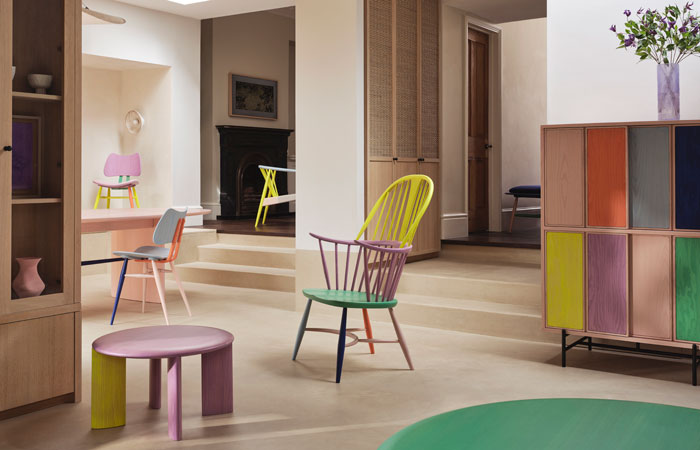
You can sit with us Installation for LDF 2023 photo by Megan Taylor
The Helter Skelter is a powerful visual reference to childhood for so many, but particularly for Jordan, as his first job at 15 was working at the Black country living museum in his home town on the Helter Skelter. He used to have to wear a Victorian costume and shout ” see the fair from the air”. That was a delicious starting point for us. We also had to clear out my Nan’s house whilst we were designing this and it threw up loads of questions for us about the things we attach emotion to and how physical possessions can mean so much and others can mean nothing. So many memories can be held in an object. Those objects will become part of the installation.
What emotions or thoughts do you hope to evoke in CDW visitors when they interact with your installation?
We hope it evokes memories and laughter and many smiles. We hope it starts conversations about memories and is an opportunity to experience fun.
Looking at your installation and your body of work, what do you feel this latest piece conveys about you as designers and your evolution in the design world?
I think there has sometimes been a misconception about our work that it is about visual perfection. But this is certainly not that. It won’t be perfect, it is vintage, it will be filled with soul we hope and there is joy in the imperfection.
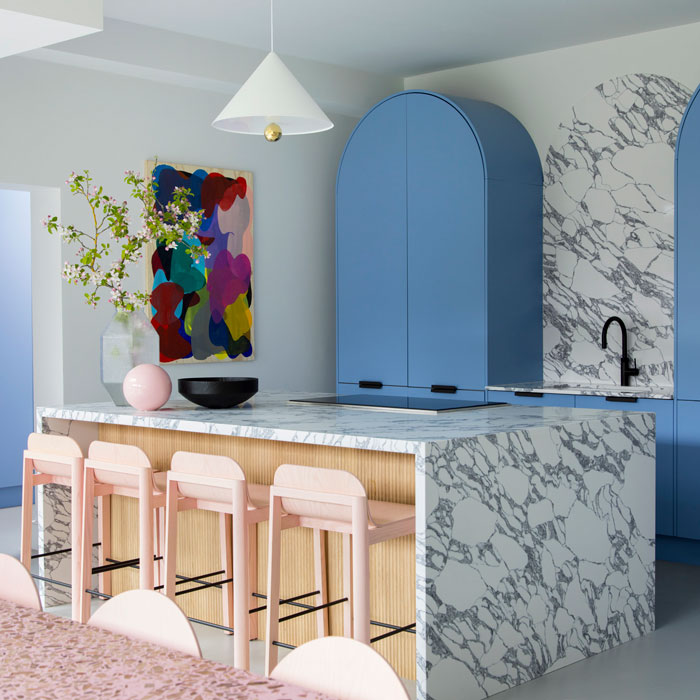
Blue RISE kitchen by 2LG studio for John Lewis of Hungerford. Photo Megan Taylor
Our work has always been about character and identity and narrative at its heart because we first trained professionally as actors and that means our creative process is about diving into character, of the people who inhabit a space, but also of the architecture and also the cultural scene, the context of the moment. So this piece very firmly sits in the narrative driven side of our work. Crossing a boundary from design into narrative art. Making human connection is key
As we look ahead, what exciting developments or projects can we expect from 2LG Studio in the near future?
We are indulging in the exploratory stage of our practice and allowing ourselves space to grow right now, after 10 years of driving. We are working on a second book and more work in the vein of YCSWU. but we also cannot wait to show you how our interior design style is evolving, watch this space.




